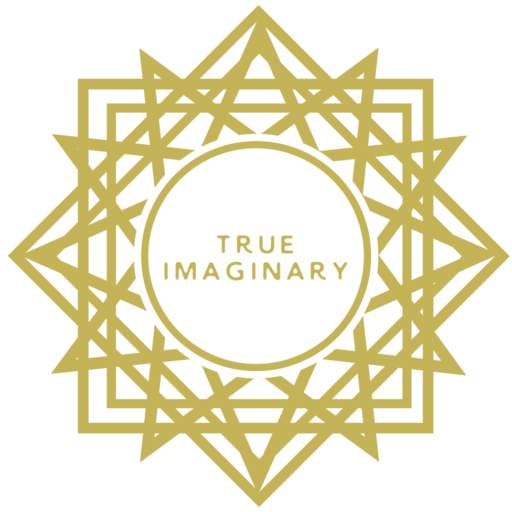The second you even think about writing a book, if you talk about it to anyone, you will have to answer the question: What it is about? For many authors, this can be a difficult question to answer in the 1-5 sentence synopsis commonly known as an “elevator pitch”. And that’s understandable. How can you sum up 80,000 words into just a few? Full-length novels are always going to be about more than one thing. So, what should you focus on and what can be left out?
I recommend that all authors develop an elevator pitch as soon as possible in their writing process. This is something that is going to change and adapt with your book, but taking the time to figure out the foundation of your story is one of the keys to creating something compelling and interesting that not only achieves your own goals, but translates them successfully to your readers. It can help you problem solve through your edits and can even help you determine your books proper place within the current market.
Here are some things to think about when creating an elevator pitch:
Plot or Theme?
Determining if the root of your story derives from the plot or the theme can tell you a lot right away. Plot and genre/popular fiction usually go hand in hand, whereas theme-based stories generally fall under literary or upmarket (sometimes called book club) fiction. When people are discussing your book after reading, do you want them focusing on the twists, the surprises, and the best moments between characters? Or do you want them discussing the message, the ideas, and the questions the book introduces about our own world and behaviours?
Knowing your book’s genre and market will not only help you target the right agents, publishers, and readers, but it will also help you craft the best possible story that will keep those readers satisfied.
Here are some examples of plot vs. theme-based elevator pitches:
The Handmaid's Tale (Literary Fiction/Theme Based)
From TVLine.com:
The Handmaid’s Tale is the story of life in the dystopia of Gilead, a totalitarian society in what was formerly part of the United States. Facing environmental disasters and a plunging birthrate, Gilead is ruled by a twisted religious fundamentalism that treats women as property of the state. As one of the few remaining fertile women, Offred is a handmaid in the Commander’s household, one of the caste of women forced into sexual servitude as a last desperate attempt to repopulate a devastated world. In this terrifying society where one wrong word could end her life, Offred navigates between Commanders, their cruel wives, domestic Marthas, and her fellow handmaids — where anyone could be a spy for Gilead — all with one goal: to survive and find the daughter that was taken from her.
Notice here that there is no mention of plot points or even the main character until several sentences in. This story is composed around the scenario the world of the story lives under and the comments Margaret Atwood wanted to make about humanity, rather than the details of how the characters get from the beginning of the action to the end.
Eat, Pray, Love (Upmarket Fiction/Theme Based)
From IMDB.com:
A married woman realizes how unhappy her marriage really is, and that her life needs to go in a different direction. After a painful divorce, she takes off on a round-the-world journey to “find herself”.
This description starts with an event and continues with the action of taking a trip around the world. But the focus here is still on Elizabeth Gilbert’s state of mind and the emotional growth of the piece rather than the details of where she went and what she did there. Upmarket books are usually a combination of the two styles, where they are based in themes but built with lots of action and a consistent story structure.
The Girl on the Train (Genre Fiction/Plot Based)
From PaulaHawkinsBooks.com:
EVERY DAY THE SAME
Rachel takes the same commuter train every morning and night. Every day she rattles down the track, flashes past a stretch of cozy suburban homes, and stops at the signal that allows her to daily watch the same couple breakfasting on their deck. She’s even started to feel like she knows them. Jess and Jason, she calls them. Their life—as she sees it—is perfect. Not unlike the life she recently lost.
UNTIL TODAY
And then she sees something shocking. It’s only a minute until the train moves on, but it’s enough. Now everything’s changed. Unable to keep it to herself, Rachel goes to the police. But is she really as unreliable as they say? Soon she is deeply entangled not only in the investigation but in the lives of everyone involved. Has she done more harm than good?
This piece immediately focuses on a scene and the action within it, setting up a hook for the whole story. From this description, we expect twists and fast-paced action throughout. This description is also a bit deceptive, not mentioning that one of the houses Rachel is looking at is her former home and is still occupied by her ex and his new family. It also focuses only on Rachel, even though the book is told from three perspectives. This signals that while the narration is divided, this will still primarily be Rachel’s story.
The Adulterants (Genre Fiction/Plot Based)
From Chapters.Indigo.ca:
For readers of Roddy Doyle, Nick Hornby, and Mark Haddon, The Adulterants is a piercingly funny—and cringingly poignant—take on how hard it is to grow up and how hard it is when you don’t.
Ray Morris is a tech journalist with a forgettable face, a tiresome manner, a small but dedicated group of friends, and a wife, Garthene, who is pregnant. He is a man who has never been punched above the neck. He has never committed adultery with his actual body. He has never been caught up in a riot, nor arrested, nor tagged by the state, nor become an international hate-figure. Not until the summer of 2011, when discontent is rising on the streets and within his marriage. Ray has noticed none of this. Not yet.
The Adulterants would be a coming-of-age story if its protagonist could only forget that he is thirty-three years old. Throughout a series of escalating catastrophes, our deadpan antihero keeps up a merciless mental commentary on the foibles and failings of those around him, and the vicissitudes of modern urban life: internet trolls, buy-to-let landlords, open marriages, and the threat posed by more sensitive men. But the wonder of The Adulterants is how we feel ourselves rooting for Ray even as we acknowledge that he deserves everything he gets.
There is a lot going on in this description! I am going to tackle the first part of it a bit later (because it is fantastic), but for now, let’s look at the second and third sections. Because this is a comedic book, tone is very important. Once that has been established, the focus is on the details and the action of what happens to Ray and how he deals with it.
With each of these pitches, we get a sense of what the book is all about and what it is going to give to readers. We also get a sense of the literary journey that we are about to embark on.
The Question
Each story, at its core, is trying to answer at least one question: Will Frodo succeed in destroying the ring? Did Nick Dunne kill his wife in Gone Girl? Will Bridget Jones find love? Determining the questions that your book is asking and answering is a fast track to finding that perfect elevator pitch.
When you’re working with a plot-based story, the question is usually either going to surround the main character doing or achieving something or is going to revolve around some inner growth that is achieved through action. Looking at the examples above, here are some possibilities for the main question:
The Girl on the Train — Who murdered Megan? Can Rachel be trusted? Will Rachel be able to recover from this difficult time?
The Adulterants — (Implied by the “coming-of-age” title.) Will Ray grow up? How does all of this happen to Ray? What will be the turning point for Ray?
When you’re working with theme-based stories, the question is usually going to have to do with our own world. By the end of the book, the author will have presented their own answer to the question or, more frequently, will have presented a story that encourages discussion and even discourse on that question.
The Handmaid’s Tale — What are the dangers of political religious extremism? What are the consequences of complacency? Could we, as a society, reach this point? What would you do if you were living through these circumstances?
Eat, Pray, Love — What gives life meaning? What determines happiness? Can you start over/still change at midlife?
With all of these, there are many questions being presented by the work other than the ones listed. And there are theme-based questions within the plot-based stories, and vice versa. Creating this short summary of your story will simply help to highlight the question(s) that you will use as your story’s foundation.
Comp Titles
Now I want to go back to that first line of the elevator pitch for The Adulterants: “For readers of Roddy Doyle, Nick Hornby, and Mark Haddon, The Adulterants is a piercingly funny—and cringingly poignant—take on how hard it is to grow up and how hard it is when you don’t.”
This starts by offering comparable authors to Joe Dunthorne. Finding other books or authors who might share a readership to yours is one of the greatest marketing and descriptive tools that you have at your disposal. Not only can it help you pinpoint your genre, tone, and style, but it will also help set expectations for your readers. For example, some mystery books are gritty and gory while others fall under the cozy mystery category and don’t feature any violence on the page. Fantasies can be beautifully written with lots of descriptive passages about the world or more direct and focused on plain language and action.
When you’re thinking of comp titles or authors, it can help to start with the “meets formula”: This book is X meets Y.
You can make this as simple as listing two titles — This book is Beautiful World, Where Are You meets Malibu Rising.
It can also include some descriptive text that helps express exactly what you’re taking from each — This book mixes a world similar to that of Beautiful World, Where Are You with the mystery structure and multiple perspectives of books like Malibu Rising.
You can also mix and match in authors instead of specific book titles, if you feel their entire body of work captures the tone or style of your piece — This book combines the intrigue, mystery, and drama of Malibu Rising with a similar tone and style to Sally Rooney.
If books don’t seem to fit, many authors will use films instead when creating their elevator pitches.
All of these tools are meant to help you zero in on the root of your story, why you’re telling it, and what it is meant to say. It is an exercise that is beneficial to go back to several times as you are working through the writing process. Also, once it comes time to pitch your story to agents or create the marketing materials if you’re publishing on your own, you will be extremely thankful to your past self that this work is already done!


